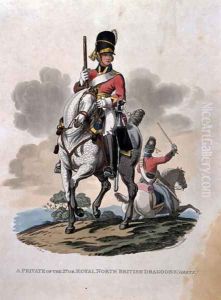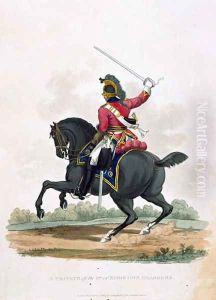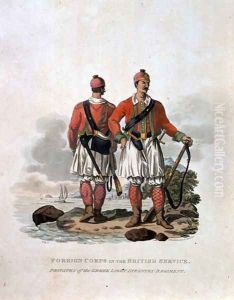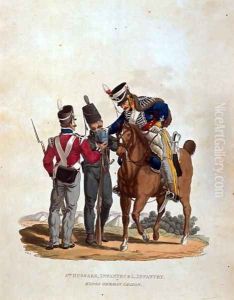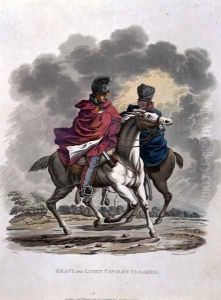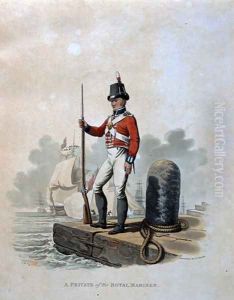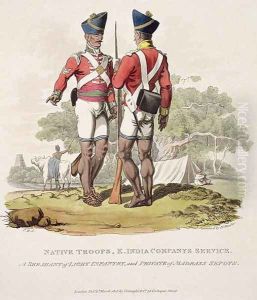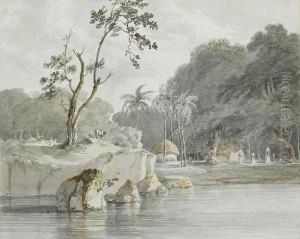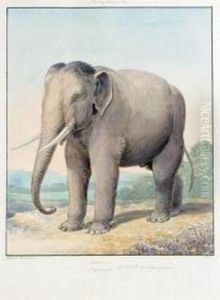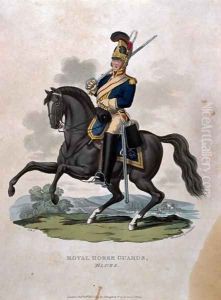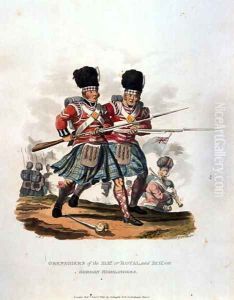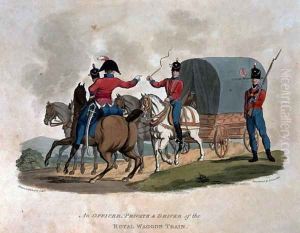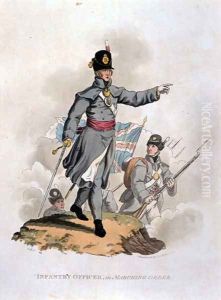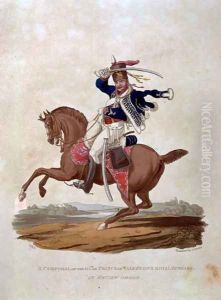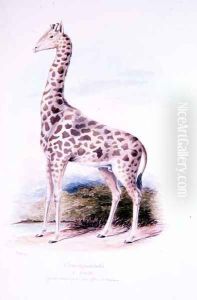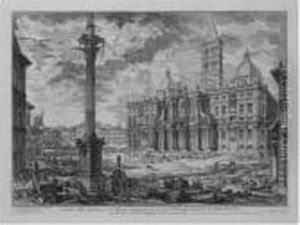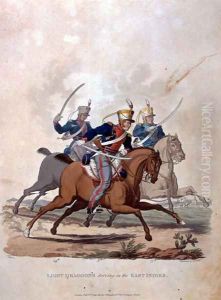





Light Dragoons serving the East Indies, from Costumes of the Army of the British Empire, according to the last regulations 1812, engraved by J.C. Stadler, published by Colnaghi and Co. 1812-15
-
About Reproduction
Discover the allure of art with our faithful reproduction of "Light Dragoons serving the East Indies, from Costumes of the Army of the British Empire, according to the last regulations 1812, engraved by J.C. Stadler, published by Colnaghi and Co. 1812-15", originally brought to life by the talented Charles Hamilton Smith. Unlike posters or prints, our hand-painted oil painting breathes an unique sense of depth and texture into your space. Every detail, every stroke, and every texture is meticulously recreated, paying the perfect homage to Charles Hamilton Smith and his artistic vision.
Owning this piece is more than just decoration - it's a statement of your refined taste in art. Let the vibrant colors and intricate details of this replica serve as a daily reminder of the beauty in our world. Elevate your decor and appreciate the richness of art with our replica of this masterpiece.
-
Painting Description
The "Light Dragoons serving the East Indies" is a notable illustration from the series "Costumes of the Army of the British Empire, according to the last regulations 1812," engraved by J.C. Stadler and published by Colnaghi and Co. between 1812 and 1815. This series, created by Charles Hamilton Smith, provides a vivid and detailed portrayal of the British Army's uniforms and regalia during the early 19th century, a period marked by significant military engagements and colonial expansion.
Charles Hamilton Smith, an accomplished artist and soldier, meticulously documented the various uniforms worn by British military personnel. His work is renowned for its accuracy and attention to detail, capturing the essence of military attire and the distinctions between different regiments. The "Light Dragoons serving the East Indies" is a prime example of his dedication to depicting the British Army's diverse and elaborate uniforms.
The Light Dragoons were a cavalry regiment known for their mobility and versatility, often deployed in various theaters of war, including the East Indies. The East Indies, a term historically used to describe South and Southeast Asia, was a region of strategic importance to the British Empire. The presence of the Light Dragoons in this area underscores the British military's efforts to maintain control and influence over its colonies and trade routes.
The illustration by J.C. Stadler, based on Smith's original work, showcases the distinctive uniforms of the Light Dragoons, highlighting elements such as their helmets, jackets, and weaponry. The detailed engraving captures the essence of the regiment's appearance, providing valuable insight into the military fashion and equipment of the time.
Published by Colnaghi and Co., a prominent London-based print seller and publisher, this series of engravings was widely distributed and appreciated for its artistic and historical value. The "Costumes of the Army of the British Empire" remains a significant resource for historians, military enthusiasts, and art collectors, offering a window into the sartorial splendor and organizational structure of the British Army during the Napoleonic Wars and the subsequent years of British imperial expansion.
-
Lead Time & Shipping
When you order this oil painting replica, it typically takes 2-3 weeks to paint. If the artwork is more complex, it might need a little more time to ensure the best quality. Once it's ready, we'll send you a photo for your approval. After you give the green light, we'll ship it to you for free.
-
Return & Refund
We believe in the quality of our hand-painted oil painting reproductions, and your satisfaction is our priority. If for any reason, you are not completely satisfied with your purchase, we offer a 45-day return policy. You can return your artwork within 45 days of receipt and receive a full refund. Please note that the artwork must be returned in the original packaging and in the same condition as it was received.





